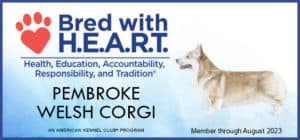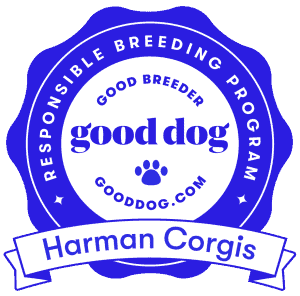Home » Von Willebrand Disease Type 1 (vWD1)
Genetic diseases with simple modes of inheritance
Von Willebrand Disease Type 1 (vWD1)
What is vWD1?
Von Willebrands disease is a blood clotting disorder. There are 3 forms of this disease and Pembrokes may inherit type 1. This disease is much like Hemophilia in humans.
What are the symptoms?
Some dogs with Von Willebrands disease may not show any symptoms while others bruise easily or severely bleed from wounds or during surgery. Veterinarians may perform a clotting time test prior to spaying or neutering to make sure that a problem does not exist.
Is there a treatment?
In severe instances, dogs may be given transfusions to stop the bleeding. Surgeries in these dogs may require supplementation of plasma products and additional sutures or bandages to reduce bleeding. Care should be taken to ensure that dogs with vWD1 do not experience trauma and owners should know where the nearest emergency vet hospital is located in case of an emergency.
Genetic testing & our breeding program
We test ALL of our breeding dogs for vWD1 and use these results to plan matings to ensure that no “afffected” puppies are produced.
Since we use genetic results to plan matings and neither “clear” or “carrier” individuals will develop the bleeding disorder, we have not eliminated all carrier individuals from our breeding program. We do not have any vWD1 affected dogs.
Just like with DM, we are focused on creating a great dog overall and are not willing to sacrifice quality.
So for us, we will continue to test all dogs in our breeding program and use this data to plan matings so that no “affected” puppies will be produced.
We can perform an individual vWD1 test on a puppy through Gensol for $30 and will work with breeders to help them select dogs with a vWD1 status that fits their program.
What genetics are involved?
The gene involved is VWF on chromosome 27.
Just like with DM, dogs inherit one copy of this gene from each parent. Fortunately this disease is a recessive autosomal genetic disease meaning that for a dog to be affected it must inherit 2 copies of the mutation and environmental factors do not seem to play a role in the development of the disease.
Three scenarios may occur
1. A dog may inherit a normal gene from both parents.
These dogs are called “clear” because they are not at risk of developing vWD1 themselves nor can they pass on a mutated gene to their offspring.
2. A dog may inherit a normal gene from one parent and a mutated gene from the other parent.
These dogs are called “carriers”. They are not at risk of developing the disease themselves but they can pass on the mutation to their offspring, therefore, should be bred to a vWD1 clear individual to prevent the chance of producing offspring that may be affected.
3. A dog may inherit 2 mutated genes.
These dogs are called “affected” and may exhibit signs of the disease.
For breeders, affected individuals will always pass on a copy of this mutation to their offspring so affected individuals must only be bred to vWD1 clear mates to ensure that affected dogs are not produced.





